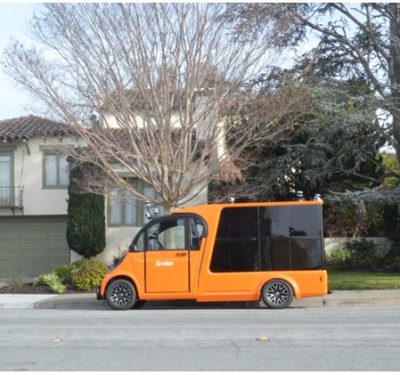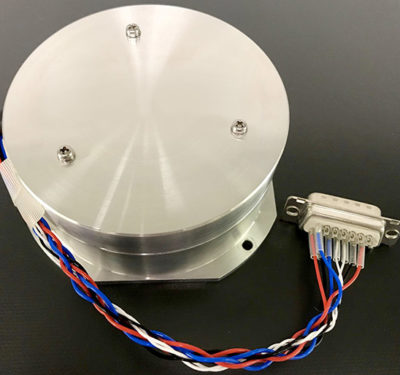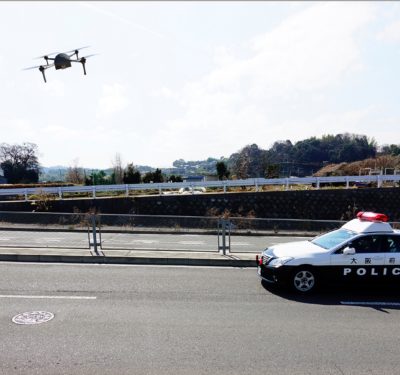
With a history dating back to the early days of the DARPA Grand Challenge, Applanix has been committed to meeting the needs of autonomous vehicle manufacturers for more than a decade. The recent introduction of the Autonomy Development Platform only re-emphasizes the company’s plans to continue playing a leading role in many autonomous vehicle programs deployed worldwide in commercial applications.
Applanix, a Trimble Company and leader in positioning and orientation technology, introduced its Autonomy Development Platform to provide automakers, truck makers, and Tier 1 vehicle suppliers the hardware, software, engineering, and integration services they need to accelerate their development programs for on-road and off-road autonomous vehicles.
“GPS and INS, that has been our pedigree, and now we’re going to be taking that to the next step, finding innovative ways to use other forms of assistance aiding for positioning. This is the next evolution. We believe it’s the future,” Louis Nastro, Director of Land Products at Applanix, told Inside Unmanned Systems.
By combining customized integration and engineering services along with Applanix’ proven GNSS-inertial positioning technologies, the Autonomy Development Platform is designed to advance driverless vehicle development projects at every stage of development and commercialization.
“With the introduction of our Autonomy Development Platform, Applanix now offers on-road and off-road vehicle manufacturers the tools and engineering expertise necessary to support and augment their driverless vehicle development programs,” Nastro added. “The platform delivers a navigation solution that is fully customizable and includes integration and engineering services, field-tested hardware and proprietary software for highly accurate positioning. The navigation solution is capable of working with all sensors, including multiple cameras, LiDAR, radar and ultrasonic sensors, and with all vehicle types at all stages in the development and commercialization cycle.”
The company’s technology enables highly accurate assessments of the full 360-degree environment around a vehicle to produce a robust representation, including static and dynamic objects, critical for successful vehicle autonomy.
“Our expertise in autonomous technologies is part of an extensive portfolio of Trimble solutions for automation and vehicle autonomy, which began more than three decades ago,” said Steve Woolven, president of Applanix. “Our refined positioning algorithms and expertise with sensor fusion and mobile robotic technologies enable us to provide a development platform that delivers the required performance and reliability for manufacturers to develop and produce self-driving vehicles for all environments and tasks.”
Nastro expects the new Autonomy Development Platform kits to provide solutions for all types of autonomous vehicle programs.
“Nowadays the paths have changed, and you see more integration of AI (artificial intelligence), you see a lot more types of localization and so some guys are localizing with LiDAR, some are perceiving and localizing their environments with cameras, and others are using radar and other sensors,” Nastro said.
“What we had to do was say, ‘OK, GPS and inertial with a distance measuring unit…that’s great and it’s still incredibly relevant. However, there is other sensor data that we can utilize to aid in our positioning. So, it’s not just a one trick pony if you will. We can do the full solutions for all of these manufacturers.”
In terms of flexibility, Applanix has off-road clients using this technology for mining and other applications, as well as on-road. The environments are different, but the tasks are the same — navigating from Point A to Point B safely, Nastro said.
“So, in an off-road environment you can tweak the vehicle dynamic modules that are onboard those systems, so it senses the movement of the vehicle very precisely,” he explained. “So, the trick is to get it performing right in both high-dynamic and low-dynamic environments, with high end and low end inertial sensors, so that’s what we’ve done.”
Again, flexibility is a big plus with this latest Applanix offering.
“If a vehicle manufacturer comes to us, and has an on-road, or off-road component, we basically can use these same development kits in both vehicles,” Nastro said. “But the software onboard them will be tweaked differently. The sensor data that we can use in real-time will be tweaked differently.”
Essentially it’s a build kit, Nastro adds. You begin with autonomous vehicle programs that have gone from their algorithm development, which uses the full-blown POS units, and then move on to commercialization. You can’t justify fitting a high-end GPS IMS unit in every vehicle at this time.
“With these kits if they’re in the formative stages and they want to tweak it, we can do it with a full-blown POS system,” Nastro said. “If they wish to do it for their commercial systems and they want to control it for the hundreds, and thousands, tens of thousands of units, you can take our product and then basically get testing perception data back into that low-level product and have it tweaked specifically for your application.”
It is the technology’s versatility that has Nastro and his colleagues at Applanix expecting big things.
While targeting both off-road and on-road — Applanix has systems in large mining trucks on down to automated bulldozers — so, the lower the price point of the piece of equipment that you have, the more accommodating, the lower the price point you have to have for the brain for the positioning system, Nastro said.
“What we’ve done is you can get this development kit in a packaged form, or the board level,” he added. “It depends on your level of integration expertise. If you just want something to plug and play we have a system for that. If you wish to go a step beyond, and do something that is your own packing, we have something that is an OEM kit that’s at the board level that you can drop in.”
Additionally, if you want custom inertial and custom calibration for that inertial, Applanix has “some of the best inertial scientists on the face of the planet,” so you can utilize the company’s resources for custom integration, he said. “A lot of this customization is due to the talent pool that we have at Applanix,” Nastro concluded.
The Applanix Autonomy Development Platform is available now through the Applanix worldwide sales channel. For more information, visit https://www.applanix.com/products/autonomyplatform.htm






